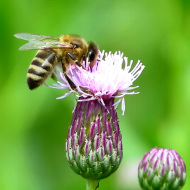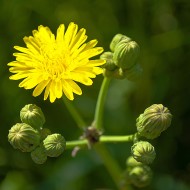Sow thistle - a dangerous field weed or a useful plant?
Content
Description of the plant
Herbaceous plants belonging to the genus of the same name of the Astrovye family number several dozen species, of which only three are the most common in our latitudes.
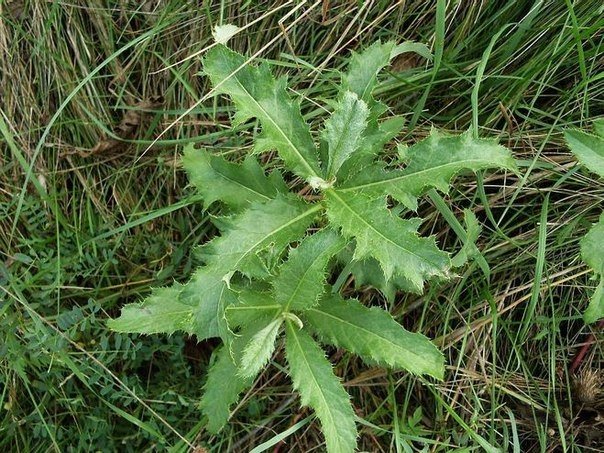
Field thistle is a perennial with a powerful tap root
Field sow thistle (yellow)
Sow thistle is a perennial with a powerful tap root, reaching a depth of 4 m. Lateral roots have multiple branches and are located in the upper layers of the soil at a depth of about 0.5 m.
The terrestrial part can reach a height of 1.5 m. The stem is strong, smooth at the base, slightly pubescent closer to the peduncles, branches at the top. The leaves are large, serrated, dark green above and grayish below.
The weed blooms with delicate yellow flowers, collected in basket inflorescences. After flowering, up to 20 thousand small brown seeds are formed on each plant, which are sown with the help of the wind. For its habitat, the weed chooses gardens, wastelands, ravines, a river bank or a swamp area.
Sow thistle
This weed is an annual plant. Its stem is small, 30–100 cm high, and the leaves are smaller, spiky and are located on petioles. Like yellow, it blooms with golden flowers, outwardly similar to dandelions, the inflorescences of which are wider than those of the field, and reach a diameter of 3.5 cm. The flowering time is the same as that of the field sow thistle. The seeds are brown, with white fluffy tufts. It is found most often in vegetable gardens, as well as in meadows.
Sow-thistle pink
This species is called a thistle. It is one of the varieties of the field thistle, but unlike its relative, it has a pink color of the flower, which darkens and becomes almost blue by the end of flowering. The stem of the plant is powerful, reaching a height of 1.6 m. The entire ground part, especially the leaves, are covered with sharp thorns. The root is vertical, on the branches it has buds of renewal, therefore, in several years it grows to a depth of 4–5 m, greatly depleting the soil. The weed lives mainly in wastelands, meadows, fields, along roads.
- Pink
- Field
- Garden
On what soils does sow thistle grow?
The weed is undemanding to the composition of the soil, therefore its range covers almost all of Europe, partly Central and Central Asia, and is also found on the African and American continents. It gives particular trouble to the agrarians of Belarus, Ukraine, the European part of Russia, the Caucasus and Siberia.
The favorite habitats of the sow thistle are empty plots of land, fields, vegetable gardens, and sometimes gardens. It shows incredible germination on fertile, well-moistened soils, especially fertilized with mineral nitrogen, but it can also grow on dried, slightly salted soils. The weed propagates by vegetative shoots and seeds, which are carried by the wind over great distances and germinate without a dormant period.
Sow thistle seeds have incredible vitality. Once in the ground, they retain their germination for about 20 years.
Application in traditional medicine
All of the above types of weeds have healing properties due to the high content of biologically active substances: alkaloids, fatty oils, organic acids, vitamins. These components endow plants with a healing effect and provide a good therapeutic effect.
Indications
Infusions and decoctions help get rid of the following health problems:
- headaches, fever, chills;
- neuroses, depression caused by physical and mental stress;
- inflammatory processes in the digestive tract, lungs;
- internal and uterine bleeding;
- worms;
- gout, abscesses;
- hepatic colic;
- facilitate the course of hemorrhoids;
- the leaves of the plant heal wounds, cuts, boils.
Also, a decoction of the leaves is recommended for diabetes, since the bitterness contained in them helps to reduce blood sugar levels.
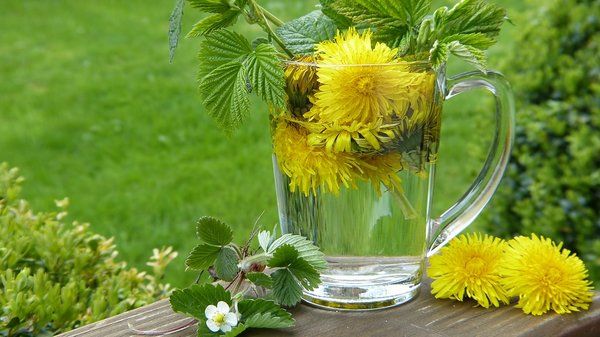
Sow thistle is actively used in folk medicine
Contraindications
Preparations and products based on sow thistle are not recommended for use:
- during pregnancy and lactation,
- with severe chronic diseases of the digestive tract and spleen;
- with intolerance to plant components.
The weed contains poison, so it is advisable to consult a doctor about the appropriateness of its use and dosage.
Preparation of medicinal raw materials
For the preparation of medicinal broths, the stem part, leaves and roots are harvested. The herb is harvested during flowering, from late June to September. Dry in the shade or in a well-ventilated dry place. The roots are harvested in the fall, from the end of September. They are thoroughly washed, crushed or cut into pieces, and also dried. The prepared raw materials are stored in paper or linen bags for no more than 2 years.
Sow thistle-honey plant
Beekeepers appreciate the weed for its excellent melliferous qualities, which make it possible to collect about 120-140 kg of useful nectar from 1 hectare. Sow thist honey is considered to be of the highest quality, as it has a good healing effect, has a delicate aroma and taste. It is worth noting that it crystallizes rather quickly, but this does not affect its quality in any way. Sow honey is ideal for winter feeding, as bees willingly feast on this nectar at any time of the year.
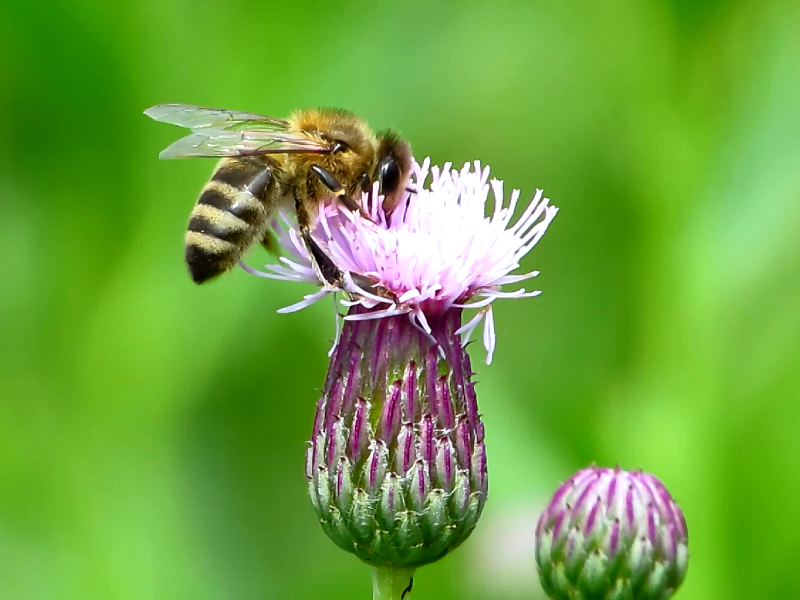
Beekeepers value sow thistle for its excellent melliferous qualities
Weed Control Video
In this video, experts tell you how to get rid of weed grass at their summer cottage.
How to fight
If the weed has started in the garden or in the garden, then it is necessary to take action as soon as possible, because it is so tenacious that it can literally revive from a piece of root. For this, there are both gentle and radical measures.
Agrotechnical methods
Means the destruction of weeds exclusively by mechanical means:
- regular weeding of beds and careful pulling of young growth;
- deep digging of beds in spring and autumn with the extraction of all the remnants of weed roots;
- timely harvesting of plant residues from the garden;
- using agrofibre, roofing material or mulch in the beds - a dense shelter creates a high temperature, which stops the growth of weeds.
The grass has very deep roots and is difficult to pull out. Watering the garden plentifully before weeding will help facilitate this process. It is better to dig up adult plants with a shovel. All weeding activities are recommended to be performed before the seeds ripen on the bush.
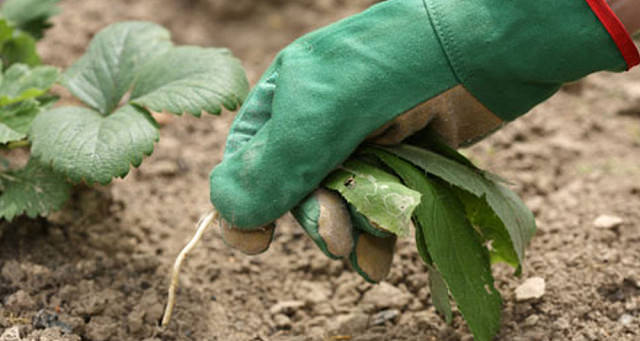
Mechanical method is the most efficient way to remove weeds
Chemical
The use of herbicides is justified only on very neglected areas that will not be planted with cultivated plants next year. Chemicals are often used in fields where it is not possible to remove each plant by hand, but today more and more farmers are looking for alternative methods of weed control.
Herbicides such as "Hurricane", "Tyrone", "Tornado", "Optimum" and "Horizon" are more suitable for the treatment of paths, empty areas and spot for the destruction of single growing weeds.
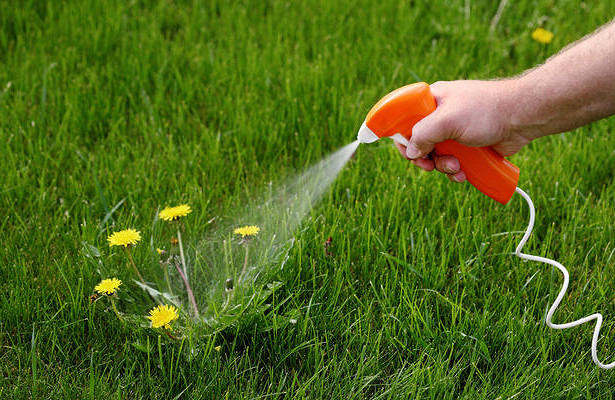
Herbicides will help get rid of weeds
Folk remedies
Since the weed has always caused a lot of trouble for gardeners, many interesting and relatively safe ways have been found:
- spraying with ammonia solution (5–6 vials of ammonia were stirred in 1 bucket of water), after which the ground part died, and the rhizome was depleted;
- sowing wheat - the weed does not like the neighborhood with the cereal, and it stops growing;
- kerosene treatment - here, the main thing is to prevent kerosene from getting on vegetable crops;
- periodic pruning of the stem at the base and breaking off the flowers;
- Sprinkle salt over the area - table salt prevents any weeds from growing, but this method is more suitable for areas that are not planted with vegetables.
The success of weed control depends on how the site is maintained. If weeding and loosening of the soil is carried out regularly, then the weeds do not have time to grow, and the garden pleases with a bountiful harvest. I would also like to remind you of the healing qualities of sow thistle, which have been known for a very long time. So if the site is overgrown with weeds, medicinal raw materials can be prepared from young plants.

